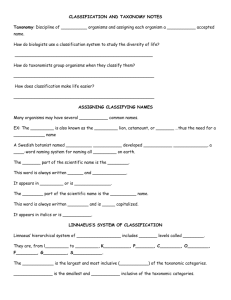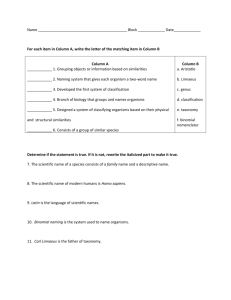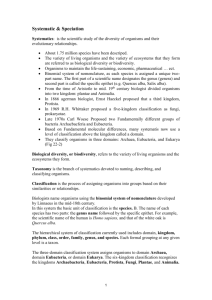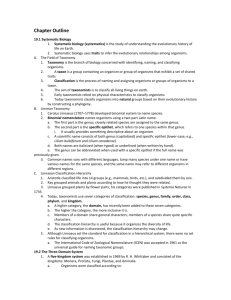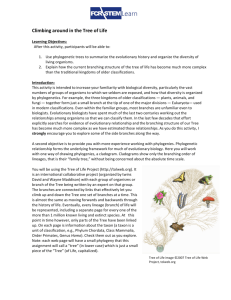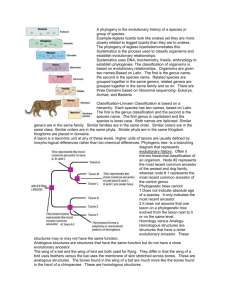evolution terms
advertisement
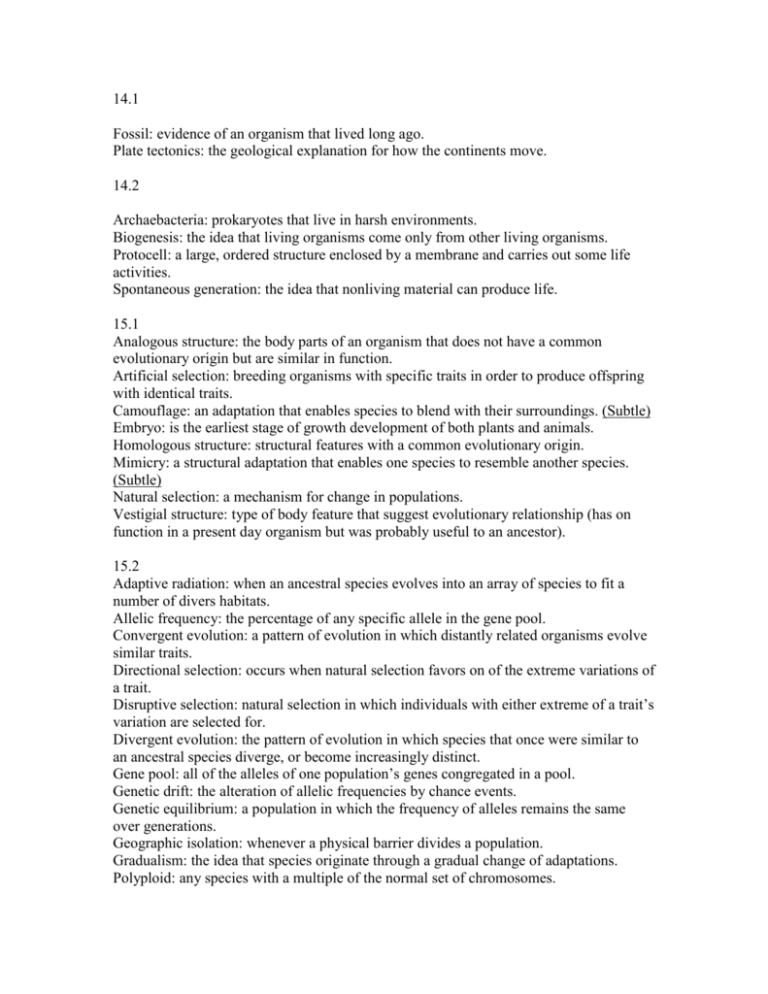
14.1 Fossil: evidence of an organism that lived long ago. Plate tectonics: the geological explanation for how the continents move. 14.2 Archaebacteria: prokaryotes that live in harsh environments. Biogenesis: the idea that living organisms come only from other living organisms. Protocell: a large, ordered structure enclosed by a membrane and carries out some life activities. Spontaneous generation: the idea that nonliving material can produce life. 15.1 Analogous structure: the body parts of an organism that does not have a common evolutionary origin but are similar in function. Artificial selection: breeding organisms with specific traits in order to produce offspring with identical traits. Camouflage: an adaptation that enables species to blend with their surroundings. (Subtle) Embryo: is the earliest stage of growth development of both plants and animals. Homologous structure: structural features with a common evolutionary origin. Mimicry: a structural adaptation that enables one species to resemble another species. (Subtle) Natural selection: a mechanism for change in populations. Vestigial structure: type of body feature that suggest evolutionary relationship (has on function in a present day organism but was probably useful to an ancestor). 15.2 Adaptive radiation: when an ancestral species evolves into an array of species to fit a number of divers habitats. Allelic frequency: the percentage of any specific allele in the gene pool. Convergent evolution: a pattern of evolution in which distantly related organisms evolve similar traits. Directional selection: occurs when natural selection favors on of the extreme variations of a trait. Disruptive selection: natural selection in which individuals with either extreme of a trait’s variation are selected for. Divergent evolution: the pattern of evolution in which species that once were similar to an ancestral species diverge, or become increasingly distinct. Gene pool: all of the alleles of one population’s genes congregated in a pool. Genetic drift: the alteration of allelic frequencies by chance events. Genetic equilibrium: a population in which the frequency of alleles remains the same over generations. Geographic isolation: whenever a physical barrier divides a population. Gradualism: the idea that species originate through a gradual change of adaptations. Polyploid: any species with a multiple of the normal set of chromosomes. Punctuated equilibrium: argues that speciation occurs relatively quickly. Reproductive isolation: when formerly interbreeding organisms can no longer mate and produce fertile offspring. Speciation: the evolution of new species. Stabilizing selection: natural selection that favors individuals in a population. Direct evidence for evolution: the development of physiological resistance in species of bacteria, insects, and plants. Indirect evidence: sources from fossils, studies of anatomy, embryology, and bio chemistry. 16.1 Anthropoid: humanlike primates. Opposable thumb: a thumb that can cross the palm to meet the other fingertips. Prehensile tail: a long, muscular tails that acts as a fifth limb. Primate: a group of mammals that includes lemurs, monkeys, apes, and humans. 16.2 Australopithecine: an early hominid that lived in Africa and possessed both apelike and humanlike characteristics. Bipedal: the ability to walk on two legs. Cro-Magnon: organisms identical to modern humans. Hominid: the two ancestral lines that led to humans and other upright/ two legged primates and the gibbons and orangutans. Neanderthal: human ancestors that supposedly lived from about 35,000 to 100,000 years ago. 17.1 Binomial nomenclature: two-word naming system that modern classification systems use. Class: a taxon of similar orders. Classification: the grouping of objects or information based on similarities. Division: plant taxonomist’s substitution for phylum. Family: a group of similar genera. Genus: consists of a group of similar species. Kingdom: a taxon of similar phyla or divisions. Order: a taxon of similar families. Phylum: a taxon of similar classes. Taxonomy: the branch of biology that groups and names organisms based on studies of their different characteristics. 17.2 Cladistics: a biological system of classification that is based on phylogeny. Cladogram: a branching diagram of a group’s derived traits. Eubacteria: prokaryotes that have very strong cell walls and a less complex genetic makeup than archaebacteria or eukaryotes. Fungus: either a unicellular or multicellular eukaryote that absorbs nutrients from organic materials in the environment. Phylogeny: the evolutionary history of a species. Protist: a eukaryote that lacks complex organ systems an lives in moist environments.




